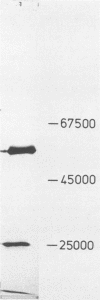Abstract
The neutralization of type 1 poliovirus by monoclonal antibody 35-1f4 was studied. The virions were rapidly linked by antibody into oligomers and larger aggregates, followed by slow redistribution of antibody between the immune complexes. The antibody content and infectivity of immune complexes were determined. Remaining single virions were fully infectious and free of antibody. The oligomers and larger aggregates did not significantly contribute to the residual infectivity, which therefore correlated with the number of remaining single virions. Papain digestion of neutralized poliovirus released fully infectious, antibody-free virions from the immune complexes. Anti-immunoglobulin antibodies reneutralized these virions. Polymerization was shown to occur even at virus concentrations of less than 10(3) PFU per ml.
Full text
PDF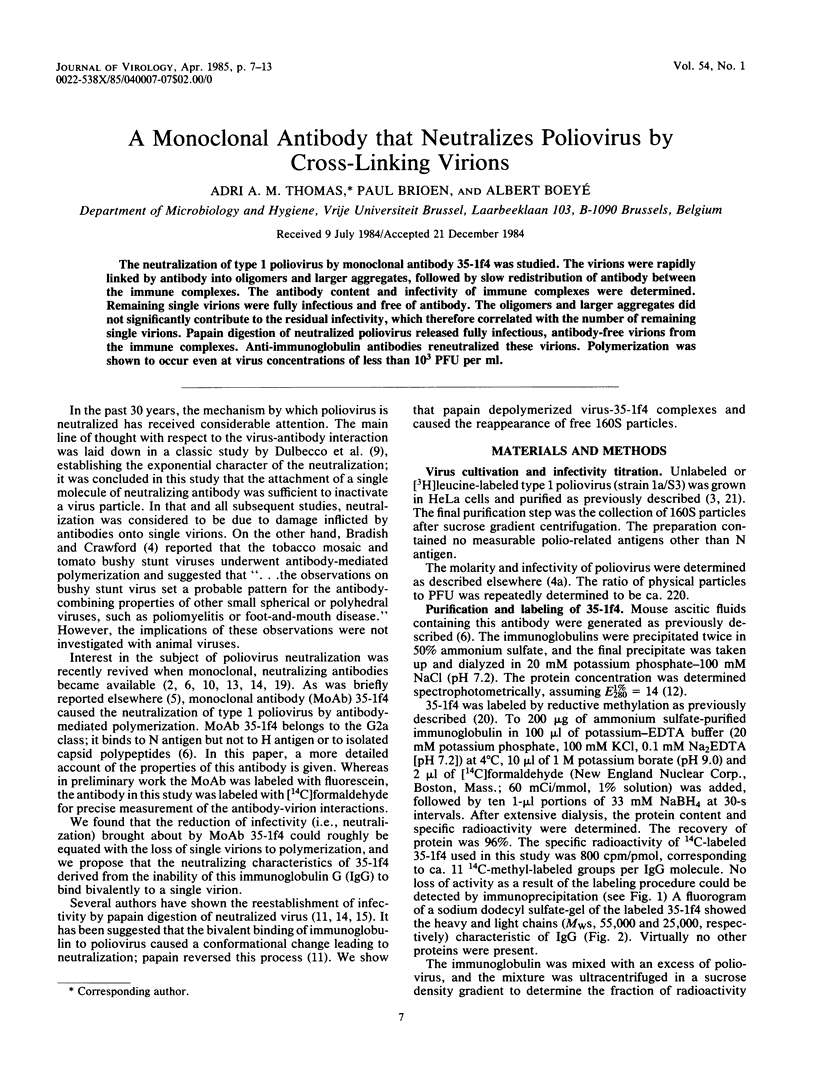
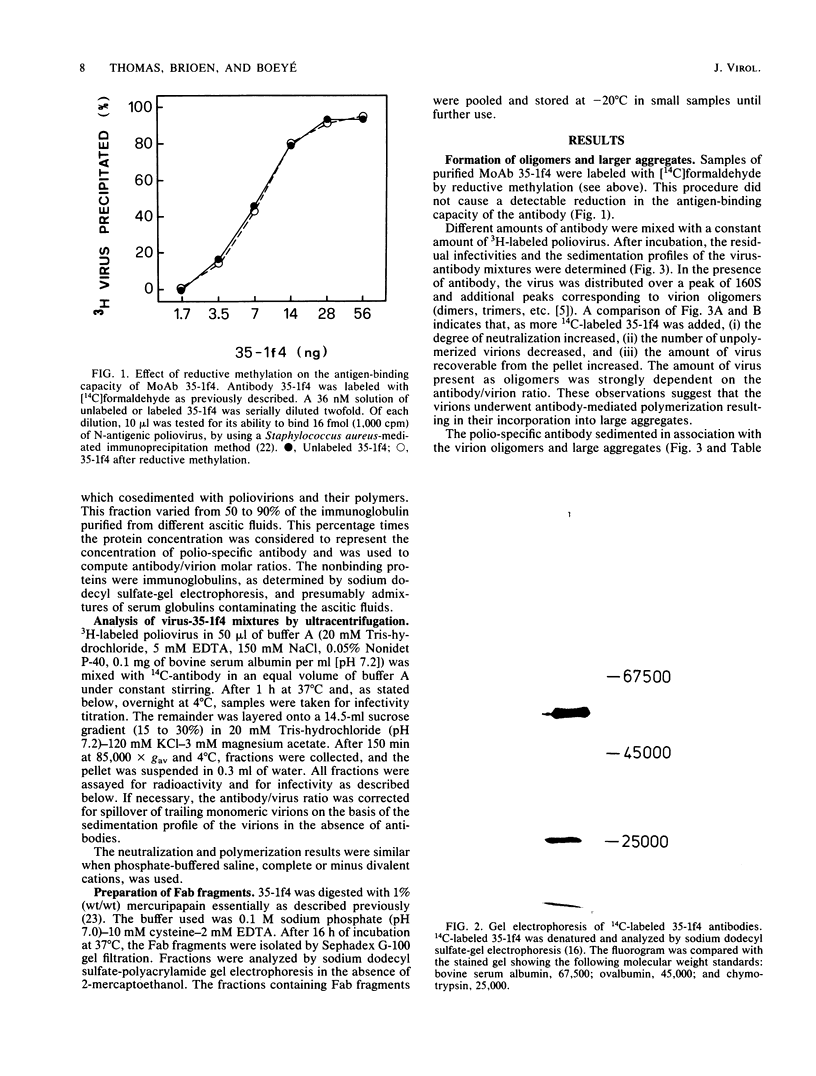
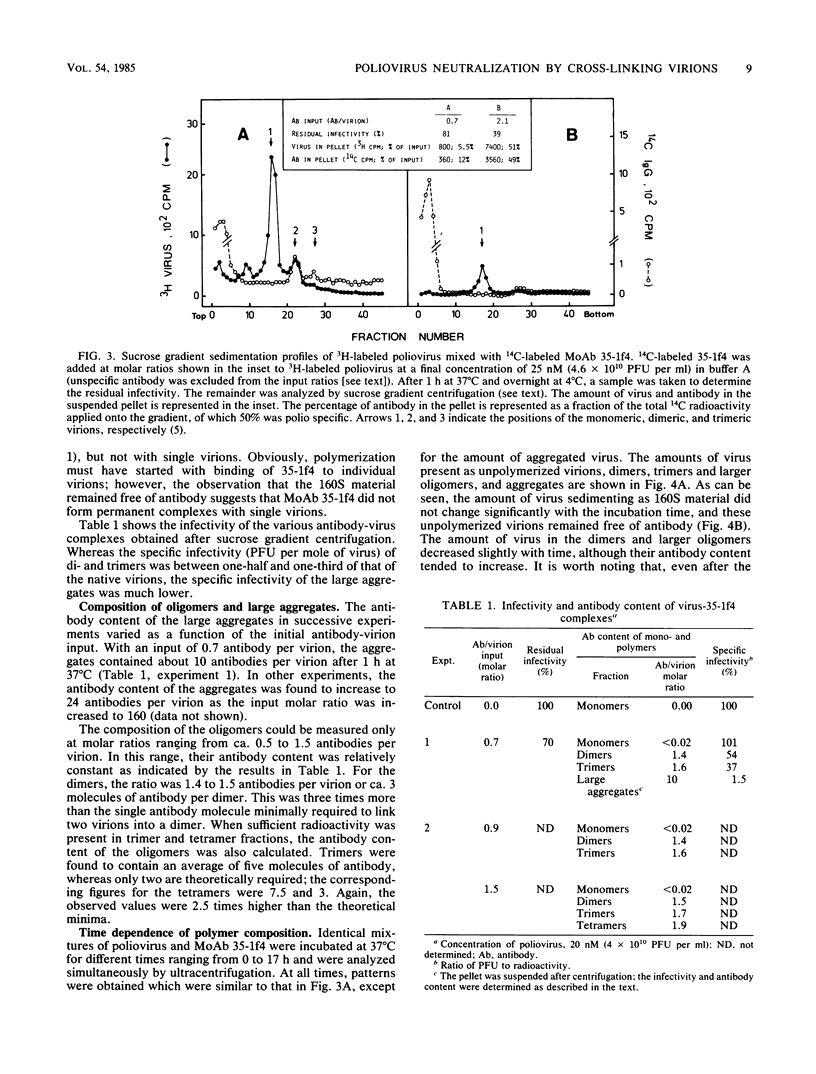

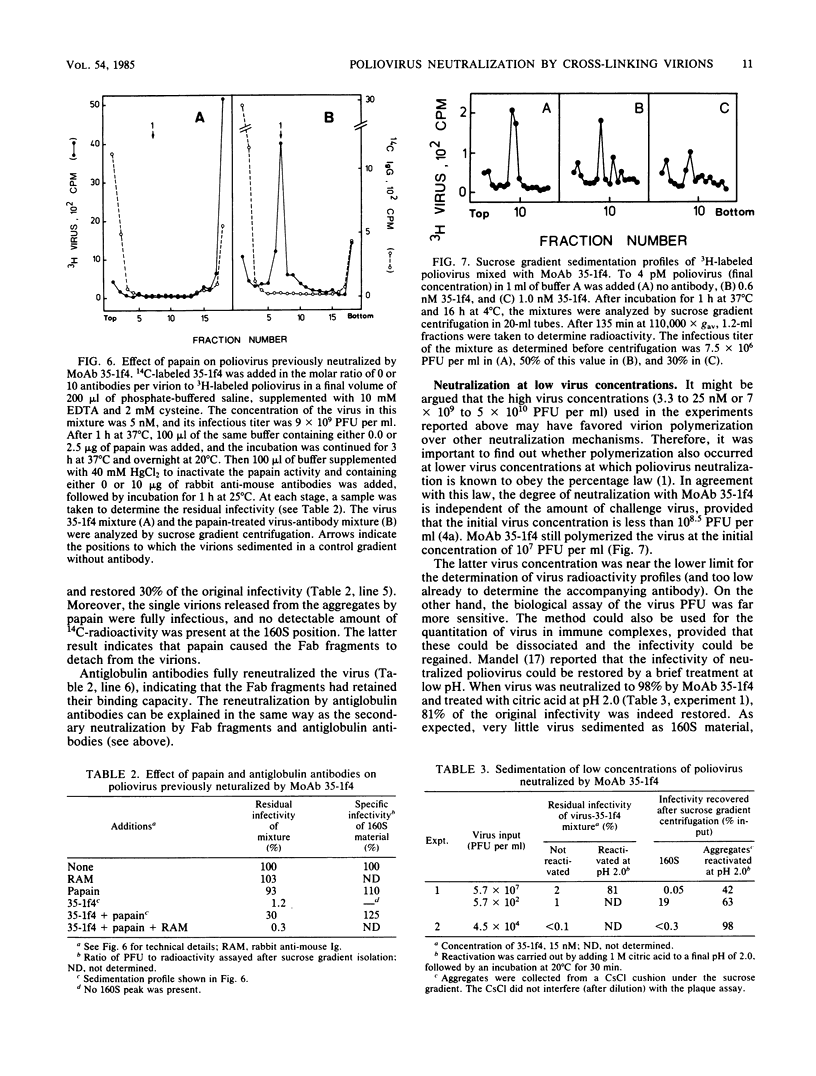
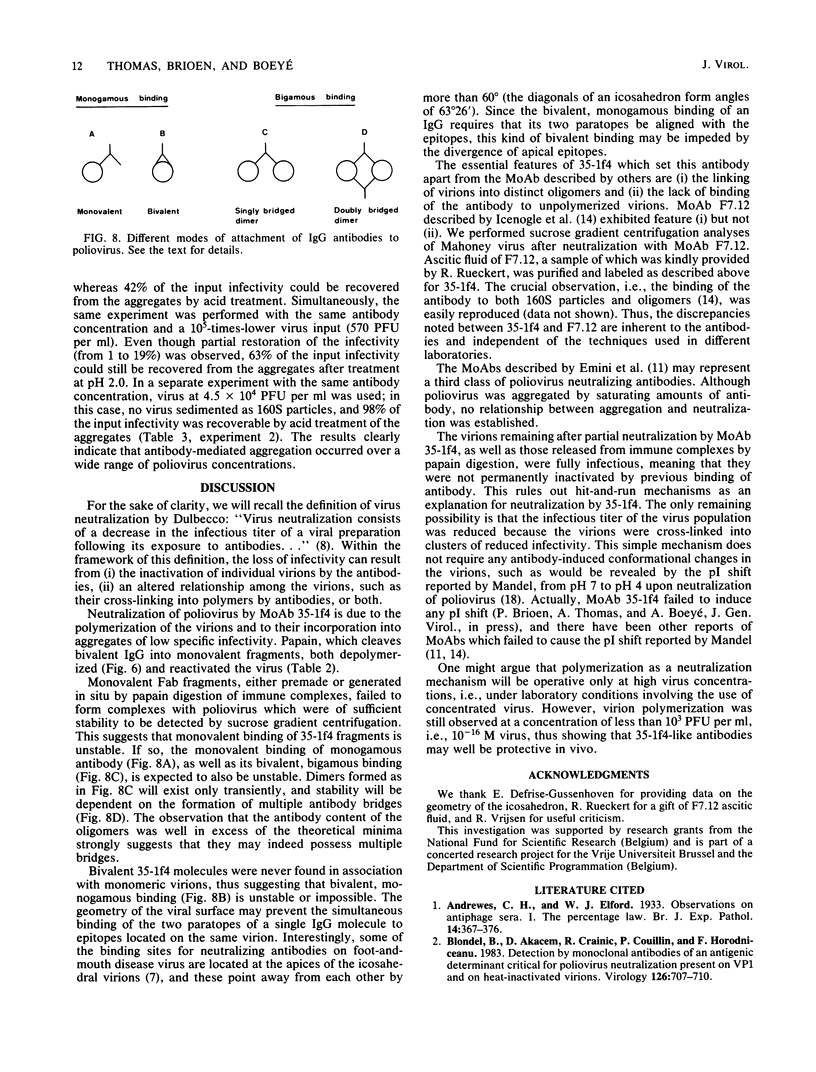
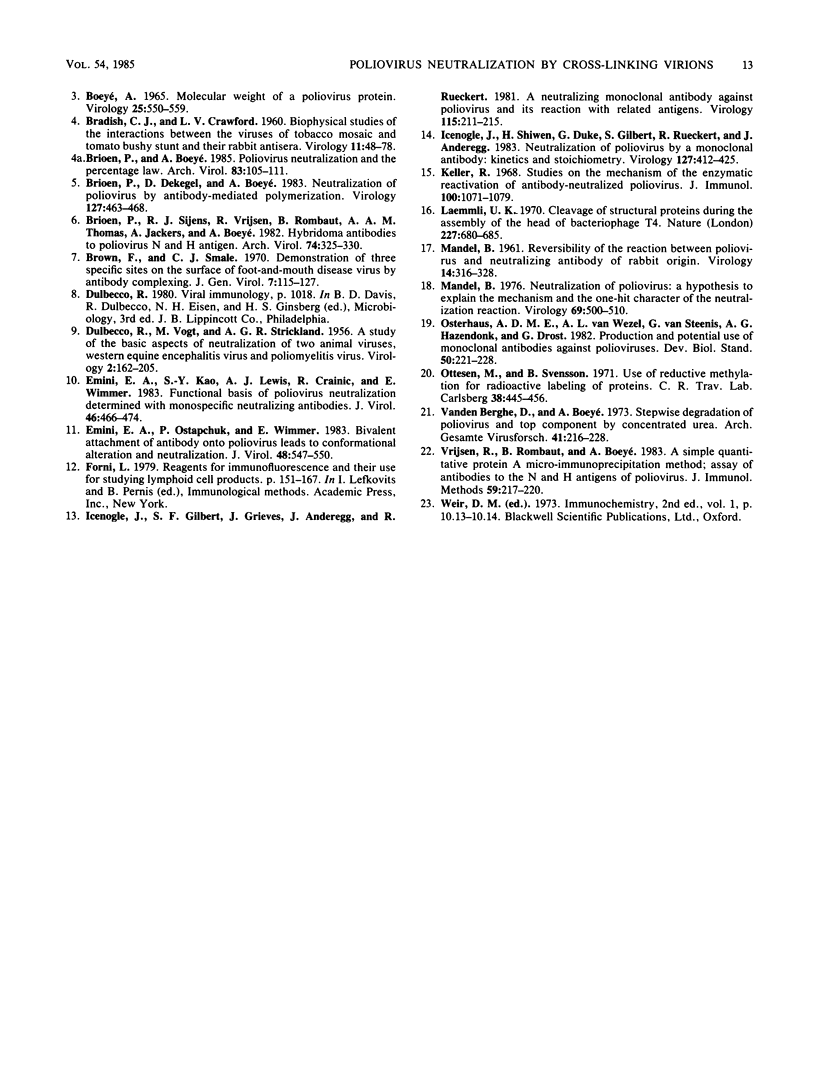
Images in this article
Selected References
These references are in PubMed. This may not be the complete list of references from this article.
- BRADISH C. J., CRAWFORD L. V. Biophysical studies of the interactions between the viruses of tobacco mosaic and tomato bushy stunt and their rabbit antisera. Virology. 1960 May;11:48–78. doi: 10.1016/0042-6822(60)90055-6. [DOI] [PubMed] [Google Scholar]
- Berghe D. V., Boeyé A. Stepwise degradation of poliovirus and top component by concentrated urea. Arch Gesamte Virusforsch. 1973;41(3):216–228. doi: 10.1007/BF01252769. [DOI] [PubMed] [Google Scholar]
- Blondel B., Akacem O., Crainic R., Couillin P., Horodniceanu F. Detection by monoclonal antibodies of an antigenic determinant critical for poliovirus neutralization present on VP1 and on heat-inactivated virions. Virology. 1983 Apr 30;126(2):707–710. doi: 10.1016/s0042-6822(83)80027-0. [DOI] [PubMed] [Google Scholar]
- Brioen P., Boeyé A. Poliovirus neutralization and the percentage law. Brief report. Arch Virol. 1985;83(1-2):105–111. doi: 10.1007/BF01310968. [DOI] [PubMed] [Google Scholar]
- Brioen P., Dekegel D., Boeyé A. Neutralization of poliovirus by antibody-mediated polymerization. Virology. 1983 Jun;127(2):463–468. doi: 10.1016/0042-6822(83)90159-9. [DOI] [PubMed] [Google Scholar]
- Brioen P., Sijens R. J., Vrijsen R., Rombaut B., Thomas A. A., Jackers A., Boeyé A. Hybridoma antibodies to poliovirus N and H antigen. Arch Virol. 1982;74(4):325–330. doi: 10.1007/BF01314165. [DOI] [PubMed] [Google Scholar]
- Brown F., Smale C. J. Demonstration of three specific sites on the surface of foot-and-mouth disease virus by antibody complexing. J Gen Virol. 1970;7(2):115–127. doi: 10.1099/0022-1317-7-2-115. [DOI] [PubMed] [Google Scholar]
- DULBECCO R., VOGT M., STRICKLAND A. G. A study of the basic aspects of neutralization of two animal viruses, western equine encephalitis virus and poliomyelitis virus. Virology. 1956 Apr;2(2):162–205. doi: 10.1016/0042-6822(56)90017-4. [DOI] [PubMed] [Google Scholar]
- Emini E. A., Kao S. Y., Lewis A. J., Crainic R., Wimmer E. Functional basis of poliovirus neutralization determined with monospecific neutralizing antibodies. J Virol. 1983 May;46(2):466–474. doi: 10.1128/jvi.46.2.466-474.1983. [DOI] [PMC free article] [PubMed] [Google Scholar]
- Emini E. A., Ostapchuk P., Wimmer E. Bivalent attachment of antibody onto poliovirus leads to conformational alteration and neutralization. J Virol. 1983 Nov;48(2):547–550. doi: 10.1128/jvi.48.2.547-550.1983. [DOI] [PMC free article] [PubMed] [Google Scholar]
- Icenogle J., Gilbert S. F., Grieves J., Anderegg J., Rueckert R. A neutralizing monoclonal antibody against poliovirus and its reaction with related antigens. Virology. 1981 Nov;115(1):211–215. doi: 10.1016/0042-6822(81)90103-3. [DOI] [PubMed] [Google Scholar]
- Icenogle J., Shiwen H., Duke G., Gilbert S., Rueckert R., Anderegg J. Neutralization of poliovirus by a monoclonal antibody: kinetics and stoichiometry. Virology. 1983 Jun;127(2):412–425. doi: 10.1016/0042-6822(83)90154-x. [DOI] [PubMed] [Google Scholar]
- Keller R. Studies on the mechanism of the enzymatic reactivation of antibody-neutralized poliovirus. J Immunol. 1968 May;100(5):1071–1099. [PubMed] [Google Scholar]
- Laemmli U. K. Cleavage of structural proteins during the assembly of the head of bacteriophage T4. Nature. 1970 Aug 15;227(5259):680–685. doi: 10.1038/227680a0. [DOI] [PubMed] [Google Scholar]
- MANDEL B. Reversibility of the reaction between polio-virus and neutralizing antibody of rabbit origin. Virology. 1961 Jul;14:316–328. doi: 10.1016/0042-6822(61)90317-8. [DOI] [PubMed] [Google Scholar]
- Mandel B. Neutralization of poliovirus: a hypothesis to explain the mechanism and the one-hit character of the neutralization reaction. Virology. 1976 Feb;69(2):500–510. doi: 10.1016/0042-6822(76)90480-3. [DOI] [PubMed] [Google Scholar]
- Osterhaus A. D., van Wezel A. L., van Steenis G., Hazendonk A. G., Drost G. Production and potential use of monoclonal antibodies against polio viruses. Dev Biol Stand. 1981;50:221–228. [PubMed] [Google Scholar]
- Vrijsen R., Rombaut B., Boeyé A. A simple quantitative protein A micro-immunoprecipitation method; assay of antibodies to the N and H antigens of poliovirus. J Immunol Methods. 1983 Apr 29;59(2):217–220. doi: 10.1016/0022-1759(83)90033-9. [DOI] [PubMed] [Google Scholar]



